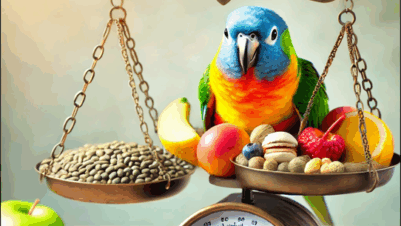THERE WAS A REPORT RECENTLY ABOUT A TEAM OF STUDENTS who were developing edible silage wrap. No doubt when the formulations for cattle, sheep and horses are being tested, veterinary students will be involved in assessing digestibility and metabolism. However, the potential to avoid the waste with “plastic” wrap has to be huge, both financially and environmentally.
Students are routinely assessing and probing for holes in our scientific understanding and veterinary students carry out projects to complete their final-year studies. Whereas much is heard at conferences and in publications about doctoral projects, the undergraduate short-term and focused student projects are available only to those close to the university system.
John Fishwick and Troy Gibson at the Royal Veterinary College have kindly made available to Veterinary Practice a selection of completed projects and these illustrate just how professionally the students approach their selected topics.
Background study
Each project contains comprehensive references and draws out relevant points that are recognised facts and aspects that are uncertain or in dispute. Clearly a great deal of background study has taken place and it appears tutors need to be satisfied that the correct interpretation of international papers has been attributed.
There are also accompanying statistics, which tease out the associations that can be relied upon and those that are left open, probably due to the limited number of observations that the student is able to carry out within the allotted time and finance.
As with many research projects there is a notation by the student that further work would be beneficial. Full details are available from the college if anyone wishes to have more comprehensive information.
Shooting horses
A project by Elisabeth Bedford involved shooting horses. Once shot the heads are removed, frozen and examined in detail. The work was further developed and published in Meat Science (Pathophysiology of free bullet slaughter of horses and ponies; Gibson et al).
Forty-six horses – half were native pony or cob and half athletic type or general purpose riding horse – were shot with a .22 calibre rifle and hollow point bullets. The length of the head is relevant.
Animals had varying degrees of damage in multiple brain areas, which was deemed to have caused immediate insensibility and death. All the horses had damage to at least four areas of the brain.
Behavioural signs were evaluated immediately before exsanguination. There was one case of slightly delayed collapse. There was no association between damage to the brain and any behavioural signs or reflexes.
The horses were shot by an experienced slaughterhouse operative. It is concluded that “in an environment other than an abattoir, such as in the euthanasia of a horse by a veterinary surgeon who does not shoot horses regularly, the method of shooting used in this study may not be ideal for animal welfare”.
All animals were shot in the frontal position with no repeat shots. Thirty-two were shot with the gun close to the head and 14 from a distance of approximately two metres.
The Humane Slaughter Association supported this project and its standard recommendation for shooting horses with a free bullet projectile is to position the shot in the middle of the
forehead, 20mm above the intersection of lines drawn from the middle of each eye to the base of the opposite ear, with the muzzle of the rearm tilted.
The current guidelines for the placement of the shot are found to be effective for the dispatch of horses in a slaughterhouse environment.
Elisabeth highlights that horses have well-defined frontal sinuses, which overlap the rostral aspect of the cerebrum and thereby influence the ideal placement shot and the anatomy and physiology of the horse means that research awareness from other species cannot be properly applied.
Calf disbudding and pain
Attitudes to pain-induced distress associated with calf disbudding were assessed by questionnaires received from 110 veterinarians and 116 farmers. Samantha Hamilton concludes that both groups acknowledge an inadequacy in vet-client communications in conveying the practicalities and potential benefits of using NSAIDs.
Veterinarians underestimate the influences of welfare, analgesic duration and effectiveness on farmers’ decisions and overrated cost impact. Veterinary recommendation is recognised as highly influential in the decision to use disbudding analgesia but the variance in perception of the farmers’ awareness could have a negative effect on veterinary recommendation and should be addressed.
All veterinary respondents practice within the UK and recorded a median working time with cattle of 80%. Approximately one third of the farmers had dairy herds, the majority beef, with a median herd size of 150 animals.
Most of the farmers (80%) indicated that they disbud to prevent injury, with disbudding being performed by farm personnel (86%). Typically calves are disbudded under eight weeks old (93%) using local anaesthetic, cautery and mechanical methods. There were considerable differences between the groups in their perception of pain.
Respondents perceived disbudding to be severely painful without medication and 82% of veterinarians and 43% of farmers perceived post-procedural pain to persist beyond 24 hours. However, 56% of veterinarians and 14% of farmers used NSAIDs.
For the vets their choice of analgesia was related to their perception of the duration of pain beyond 24 hours.
Most veterinarians stated that many of their clients would prefer calves to receive NSAIDs and half indicated that their use should be compulsory.
Samantha indicates that there is an opportunity for veterinary surgeons to discuss the use of NSAIDs with clients and as most disbudding is carried out by farm personnel, to initiate training and improve animal welfare. A paper has been submitted to the Journal of Animal Welfare.
Somatic cell count increases
A project by Ben Barber and supervised by Stephen Van Winden has yielded results that strongly suggest that cows infected with Mycobacterium avium paratuberculosis (MAP) tend to have increased somatic cell counts around the time they become seropositive.
It is proposed that an increased somatic cell count might be predisposing cows towards the progression of Johne’s Disease. This complex analysis also suggests that an underlying unknown factor might be predisposing to both events, or that the progression of paratuberculosis is predisposing the host to mastitis.
Three Holstein Friesian dairy herds participating in the Herdwise Johne’s Screening Programme contributed data from 122 cows with matched controls. The antibody response to MAP was classed as high (45 cows), progressive (20 cows) and transient (57 cows). Control cows were from the same herd, were seronegative throughout the testing programme, of the same lactation number and calved within one month of the case cow. None of the cows were MAP vaccinated.
A section of the comprehensive technical details within the project notes states that a positive antibody titre indicated the disease had gone through an immune transition from a predominately cell-mediated response to an antibody-mediated response.
This sequence of events is known to be commonly associated with Mycobacterium infections. Somatic cell counts were taken from the point a positive antibody titre occurred as well as previous and subsequent to that point.
National interest in the control of Johne’s disease has been targeted at the impact on cattle as adults having been infected as calves through faecal contamination. This project adds further encouragement to the programme, as the benefits of control may be more extensive than generally appreciated.










